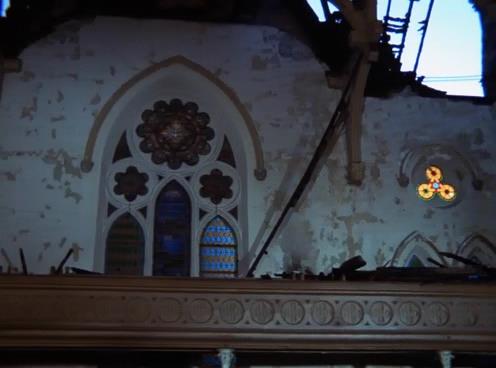Psalm 41
The Soldier
GI, beach, sea
gull, Hershey bar, shot.
“As the deer
longs for the running waters...” (Fides translation).
Excellent
score by David Raksin.
McCloud

McCloud escorts a
witness from New Mexico to New York City, but loses him to kidnappers and
enters a murder case involving a Puerto Rican “organization”, the authoress of
a book on the subject, a sophisticated defense lawyer, and a dead beauty
pageant winner.
Pilot
for the series (“Who Killed Miss U.S.A.?”, “Portrait of a Dead Girl”), from Coogan’s Bluff (dir. Don Siegel).
A
major work by Whitmore and Link & Levinson, a major work by Colla who finds
on location the city, as later Boston (Fuzz). Such views can only be compared to Flicker’s Nieuw Amsterdam (The
Troublemaker), here in color (Ben Colman cinematography).
The cutting
freshness of morning light may well have influenced Shaft (dir. Gordon Parks) nine months later.
Turnabout is fair
play, as the big city had come to the country by way of In the Heat of the Night (dir. Norman Jewison) a year before Siegel.
Fuzz
The essence of
the crime plotted against the City of Boston is extortion. The mad bomber (Yul
Brynner) is known as The Deaf Man because he wears a hearing aid of gold. The
wife of Det. Carella (Burt Reynolds) is entirely deaf, and gives him signs in
the hospital after he’s set on fire during an undercover operation (Reynolds
performs the stunt himself in a medium shot facing the camera).
A very lively,
fine style can be distinguished in two usages, a weaving camera movement sprung
by editing in the 87th precinct house, and an uncanny eye for
location setups. Both give a nuance of Boston as an American city with a
particular history and ambience.
Overall, the art
direction combined with the lighting, and especially the set decoration, give
an up-to-date view of things in themselves and only secondarily as components
of the drama. The medicine bottles on the lieutenant’s desk and the degrees on
the commissioner’s wall don’t explain the characters so much as they indicate
the presence of persons in lightly straitened circumstances. In the squad room,
where pilfering painters (out of The Sting, dir. George Roy Hill) kibitz and eye the office machinery,
Colla’s camera always finds evidence of recent activity, things piled up or
lying around not for pictorial purposes. Moreover, the light is occasionally
allowed to splash almost unpleasantly on the surface of a painted wall or a
wooden chair, revealing their different textures. The desk sergeant’s mammoth
oaken bench is chipped and smeared, as pointedly revealed by the lighting.
Tom Skerritt and
James McEachin tail Don Gordon through an open-air market where a box of fruit
has a PROSPERITY label and a bag of peanuts goes for ten cents. A truck labeled
Paine’s or St. Johnsbury is in the street, where the old buildings on Copley
Square can be discerned reaching into the distance, or the rooftops of an old
New England village are quickly seen, with an elevated train passing behind
them.
The main interior
style, as you might call it, seems not derived from Altman or Welles directly
but from the various incarnations of The Front Page and similar films
that were their sources too.
The bomber moves
along an ascending course of intimidating threats, but finally is wounded in a
gunfight and set on fire by the same wandering duo of juvenile delinquents
Carella had been the bait for. Aflame, The Deaf Man falls into the harbor and
is lost to sight and search, but a final shot (like one in John Boorman’s Deliverance,
which was released later that same month, and another close echo in Mike
Hodges’ Flash Gordon—a shot going back at least to Carol Reed’s The
Third Man) shows a hand reaching up out of the depths to clutch the golden
hearing aid afloat on the surface.
It all takes
place in winter. Colla opens in a subway tunnel, out of focus so the lights
appear as rounds, then the train emerges into the gray day with instant sharp
focus.
The Questor Tapes
A masterpiece by
Gene Roddenberry and Gene L. Coon on the Frankenstein theme carried to a
logical conclusion previously reached by Borges in “The Golem”.
Robert Foxworth
as the monster gives a performance ideally perfect, Mike Farrell is the very
picture of a project scientist.
It ends with the
creator on Mt. Ararat, the future of mankind and its past in great care,
remembering always in view of the moment.
The UFO Incident
A famous case of folie
à deux, presented veridically for audience inspection, the dramatic
revelation comes at the close, showing the outlet of the anxiety.
A rigorous
masterpiece on an ill of the age, with James Earl Jones, Estelle Parsons and
Barnard Hughes as patients and doctor.
Roxanne
The Prize Pulitzer
The bullshit
accounts are reconciled on paper and filmed as far as possible pleasantly,
pleasantly. The score with its Ken Burns piano mockery conveys an idea of
history current, in a way.
Poor girl marries
rich fuck, they don’t see eye to eye, The
Palm Beach Story (dir. Preston Sturges) goes into the tank, for the benefit
of all and sundry.